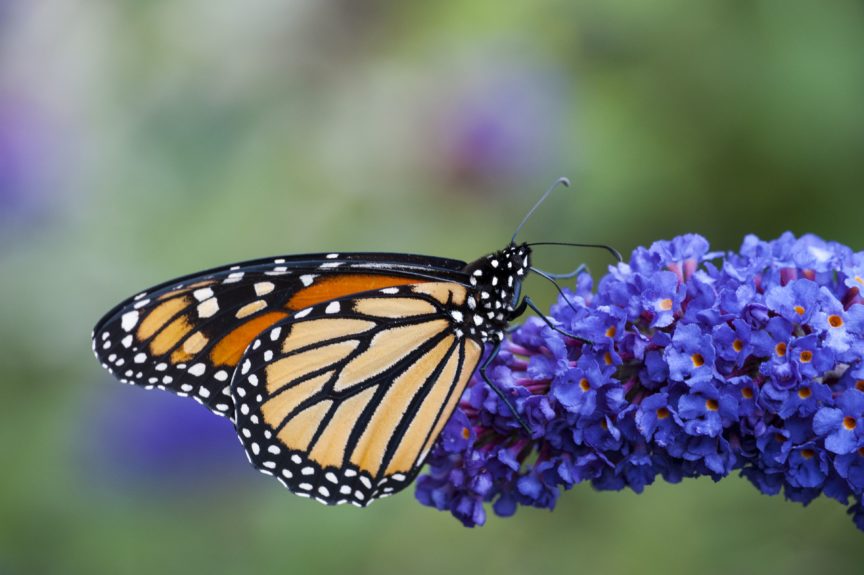Butterflies and flowers were made for each other, and there are certain flowers that butterflies absolutely love to be around.
Different species of butterflies have different preferences of nectar, in both colors and tastes. Searching for nectar they help pollinate plants, ensuring seeds for future generations. Planting a wide variety of plants will give the greatest diversity of visitors in your garden. Try staggering wild and cultivated plants, as well as plants that bloom at different times of the day and summer. Groups of the same plants will attract more butterflies than singly planted flowers. Butterflies are active from early spring right through to frost, and having a mix of plants in your garden that flower throughout this entire time will attract them all season long. Most butterflies prefer plants that have pink, red, purple, yellow or orange flowers.
Keep the sun in mind when deciding where to plant your flowers. Even if you have just a small patch of land or a balcony, if it gets good sun, you could help support butterflies. They need to warm their bodies before they can become active. To do this, they often sit on a reflective surface such as a warm flat stone, spread their wings, and turn their backs to the sun. Their wings work like solar panels, absorbing the sun’s warmth that is then transferred to their bodies. . There’s a reason we often associate butterflies with gorgeous sunny days; they typically only feed in full sun. Butterflies need to drink water as well, but they can’t do so from birdbaths or fountains. Instead, they get their water by taking up moisture from mud puddles.
Some varieties of flowers will be more attractive to many species of butterflies. The list of butterfly attracting plants is endless.
Bee Balm, Black-eyed Susan, Garden Phlox, Purple Cone flower, Violets, Asters, Butterfly Bush, Lavender, Nine Bark, Salvia, Sedum and Shasta Daisies to name a few.
A few things to remember when trying to attract butterflies:
- Choose a Sunny Site
- Protection From the Wind
- Provide a variety of Nectar Sources
- Plant Flowers in Masses
- Provide Host Plants for Caterpillars
- Make Puddles
Butterflies and moths may overwinter in any of their four life stages, depending on the family or genus. A number of butterflies survive the cold in the adult stage, by simply tucking themselves under loose bark or hiding inside a tree cavity.
Think about how you can provide winter shelter for butterflies and moths in different life stages. Hint: don’t rake all your leaves! Leave the fall leaf litter in at least part of your yard for hibernating caterpillars. Brush piles and stored firewood also make excellent shelter for overwintering butterflies.

